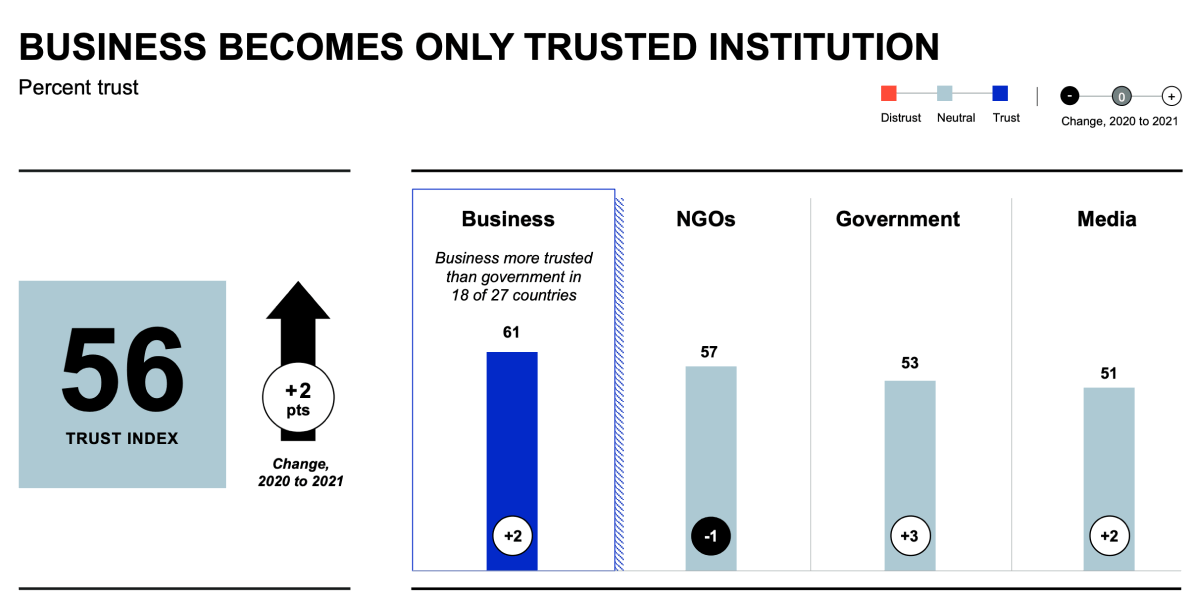Leadership communication
Learn how to improve your leadership communication, which will deliver better business results. 12 best practices for effective leadership communication.

After reading this guide, you will better understand how to improve your leadership communication, which will deliver better business results for your organization.
Discover:
- What is leadership communication?
- Why is leadership communication important?
- 12 tips and best practices for effective leadership communication
What is leadership communication?
Leadership communication is a type of communication most commonly used by leaders to relay information about the company’s culture, core values, mission, and crucial messages to build trust and encourage employees.
In practice, it involves delivering a shared vision and inspiring others to buy into that vision. It is describing the values inherent to the company and showing how the company is living up to that promise. With clear communication, leaders can navigate their organization through all types of changes, big or small.
Leadership communication also builds trust within the organization, both between leaders and employees and between employees and the organization itself.
By clarifying company culture and structure, it helps employees to align better within the organization. This communication then inspires open dialogue throughout the company, promotes collaboration, teamwork, and honest feedback.
Finally, it helps prevent miscommunications within the organization and ensures that all employees are kept up to date with important information.

Build a learning culture: a practical workbook for your organization
Upgrade your organization’s learning culture with clear, actionable strategies to address the challenges.
Download workbookWhy is leadership communication important?
It is very difficult to be a good leader without good communication skills. However, good communication skills are not as common as they should be.
According to a Harvard Business Review study, 69% of managers report that they are not comfortable communicating with their employees in general.
That is a significant number – especially because of the vital importance of good leadership communication.
1. Good communication improves engagement
Employee engagement is massively important – engaged employees will work harder, stay with the organization longer, improve customer service, and in general lead to better business outcomes.
To get employees engaged, they must trust both their leaders and the organization.
This can be done with effective leadership communication. Leaders share the vision of the company and show by actions that they are dedicated to that vision.
If they are open and honest about what is going on, positive or negative, and do not silo information, employees will then buy into that vision, putting their energy into making it a reality.
2. Clear communication aligns employees with strategic goals
How can employees be aligned with organizational goals if they don’t know what they are or don’t understand them? The answer is that they simply can’t.
It is the leadership’s job to evangelize these goals, to create awareness of them among the workforce. Not only that, leadership needs to deliver consistent updates about what the goals are, why they have been chosen, and what the path to reaching them is.
All of this serves to engage employees – their strategic alignment with organizational goals will deliver better business outcomes.
3. It builds trust and encourages transparency
There is a worldwide crisis of leadership, according to the 2021 Edelman Trust Barometer.
No matter the type of leadership, from government leaders to religious leaders, from CEOs to journalists, there is a growing trust gap. Not one type of societal leader is trusted to do what is right. People are also increasingly rejecting talking heads, who are viewed as partisan and not credible.
Trust in CEOs has dropped to an all-time low in many countries. In Japan, CEOs have the credibility of just 18%, while in France it sits at 22%. As CEOs work to address problems within their business, industry, and the world in general, this lack of credibility will present a huge challenge to overcome.
However, despite this lack of trust, people still expect business to step in where governments are absent or ineffective. There are heightened expectations for CEOs to use their skills for the good of society and the world at large, rather than just for the good of their company and shareholders.

Now, this lack of trust in CEOs can be due to a myriad of factors, but one surefire way for a leader to gain trust is through good leadership communication.
When leaders engage with honesty and transparency, people will be far more likely to trust them, and in turn, the organization as a whole. When observers feel that they understand the vision, the goals, and the future path of the company, they are far more likely to engage positively with it – especially when those visions and goals align with their own.
4. It can create a collaborative, accessible workplace culture
When leadership communication is effective, it leads to better communication throughout the workplace.
By demonstrating what good communication looks like – and leading by example – employees are more likely to adopt those positive communication tactics in their own workplace communications.
Not only that, if everyone has a good understanding of important information, that information becomes much more accessible. A new employee can simply ask a colleague and get a robust, correct answer, rather than having to delve into training manuals or company documents to find it.
5. Leadership communication training creates effective leaders
As we mentioned above, almost 69% of managers are uncomfortable communicating with employees.
By taking the time to improve leadership communication skills, your organization will also be upskilling managers in a variety of areas and making them much more effective.
Leaders with good communication skills are better at mentorship, problem-solving, and project management. This directly leads to more confident and successful leaders, who trust that they can handle any problem that comes their way.

How to conduct a skills gap analysis and what to do next
Start building your foundation for strategic workforce development.
Download guide12 tips and best practices for effective leadership communication
1. Be honest
Honesty is always the best policy – we’ve all heard that since we were kids!
It is especially crucial in business.
If employees find out that they are being lied to, especially about important matters like the financial state of the business or a big upcoming change, then they are very likely to look for a job with a different company – one that they feel they can trust.
Building trust is more than just words though, it is gained through actions that line up with those words.
2. Always follow through with your promises
Make sure that you have a perfect track record for following through with what you say you’ll do.
There is nothing more sure to break trust than not honoring commitments that you have made – and as we stated above, trust is absolutely critical for good communication.
If, during a feedback session, you have said you will fix an issue, then make sure that you do so.
Become known as a reliable, credible leader and your employees will make sure and go the extra mile for you – because you have proved that you will do it for them.
3. Communicate wisely with a plan
We’re all busy and nothing is more annoying than taking time out of the day for something that ends up being unimportant or irrelevant.
Or, worse than that, the subject is important but has been communicated poorly and the information is lost or misunderstood.
To avoid this, enter all communication with a clear plan.
For example, if you are revealing a new project, you would state what the project is, the desired outcome, the timeframe, and resources, as well as any important details. Then, repeat it. It can be helpful to use a bulleted list to make sure that you don’t forget anything important.
4. Get your boots on the ground
To be an effective communicator, you’ll not only need people to listen to you, you must listen to people.
Be visible amongst your employees, get personal with them, ask their thoughts and opinions, and listen to what they tell you.
One-on-one interactions will help you in a myriad of ways – people will trust you more because they have a personal relationship with you, and they are more likely to tell you the truth if there are issues within their team or department.
You can check actionable tips in the article “Managing by walking around.”
Build positive relationships throughout the organization and you’ll reap the benefits of better communication.
5. Be empathetic
This tip aligns with number 4. As you are building relationships with employees, try to always default to empathy.
A leader who reacts angrily or negatively to difficult situations is not one that will gain the trust of their employees, nor will they be told harsh, but necessary, truths.
By acting with empathy, that is, putting yourself in the other person’s shoes, listening attentively, and trying to understand the situation, you will be building a strong bond with your employees.
6. Distill the complex into the simple and memorable
Great communication is memorable.
That’s why slogans and tag-lines are so popular – a simple but effective line will stick in the memory so much more easily than a long, complex paragraph.
Great communicators know this and are skilled at breaking down complex subjects into clear and easily understandable sentences.
These sentences don’t have to be standalone though – you could deliver the sentence, explain the concept behind it – try to avoid too much jargon and business-speak – then circle back to the sentence and it would still be a very effective way to communicate.
7. Embrace openness and honest feedback
As much as it is unpleasant, being wrong is a critical part of learning and growing.
Leaders should never shy away from these types of conversations!
By speaking with people who have diametrically opposed viewpoints, leaders will have the benefit of understanding different perspectives and being known as open-minded and fair person.
By welcoming honest feedback, leaders gain the trust of their teams. In both cases, they show that they value the opinions of others, further building their reputation as a good communicator.
8. Learn how to speak to groups as individuals
This is not an easy skill to learn, but it is one that is worth the effort.
A truly good communicator can speak to a large group and have every person in the audience feeling like the speaker is talking to them personally.
The key here is in understanding the group that you are talking to and personalizing your message and delivery for them.
If it’s a highly technical group of engineers, you’ll be using different terms than for your customer service team.
If you have spent time meeting your audience in one-on-one situations, then you should have an idea of how to deliver a speech tailored for them and leave them feeling like you spoke to them personally.
9. Be consistent in your communication and actions
People thrive with consistency, and they especially look for consistency from leaders.
Before speaking, take your time and make sure that you transmitting information or opinions that are considered and well-informed.
This will ensure that you won’t be flip-flopping from one day to the next, and people know that they can trust what you say today will be the same as what you say next week.
10. Communicate equally with your employees
Make sure that you are communicating with employees at every level of your organization, and in every department. From part-time employees to executives, there should not be glaring differences of who you speak to – and who you listen to.
Pay attention to who you spend the most of your time with. It is very important to make sure that you are not favoring any one person, department, or level of employee. People absolutely notice these things!
11. Unite people around a single cause
Commonalities are an effective way to bring people together. This can be something as simple as a quarterly target, but could also be the company mission, the ethos behind the organization, or the long-term goal of the company.
Having a shared goal will unite your employees, and give them a clear target to work towards.
12. Transmit confidence
This one is another that can take some practice and skill, but it is massively important: Always be confident.
In your actions and words, you should demonstrate confidence. There will be times where you do not know an answer or something negative has happened, but you can still respond to difficult situations with confidence.
In doing so, you will build trust with your employees – we all know there is nothing worse than a leader who isn’t confident in the words that they are saying.

L&D strategy framework
You will receive a list of questions along with a spreadsheet template to help you analyse your L&D strategy.
DOWNLOAD FRAMEWORK



